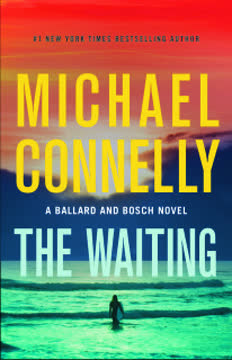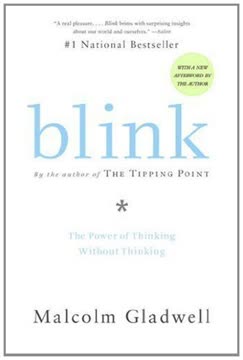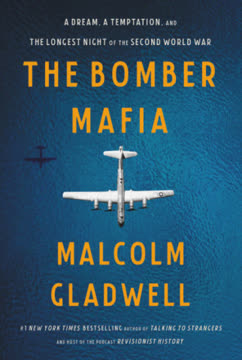Key Takeaways
1. The power of storytelling in advertising: Shirley Polykoff's Clairol campaigns
"Does she or doesn't she? Only her hairdresser knows for sure."
Revolutionizing hair color marketing. Shirley Polykoff, a copywriter at Foote, Cone & Belding, transformed the hair color industry with her iconic Clairol campaigns. Her slogans tapped into women's desires for discretion and self-expression, making hair coloring socially acceptable and even empowering.
Cultural impact. Polykoff's campaigns, such as "Is it true blondes have more fun?" and "If I've only one life, let me live it as a blonde!", resonated deeply with American women. They reflected and shaped societal attitudes towards beauty, femininity, and personal identity. By the 1970s, the number of American women coloring their hair had risen from 7% to over 40%, largely due to Polykoff's influence.
Advertising as art. Polykoff's work demonstrated the power of storytelling in advertising. She created narratives that women could relate to, using relatable models and scenarios that spoke to the average American woman's aspirations and insecurities. This approach not only sold products but also shaped cultural norms and expectations.
2. Hair color as a reflection of social change and women's empowerment
"Because I'm worth it."
Shifting paradigms. The evolution of hair color advertising from Clairol's "Does she or doesn't she?" to L'Oréal's "Because I'm worth it" reflects the changing status of women in society. This shift mirrors the transition from a focus on pleasing others to asserting self-worth and independence.
Empowerment through choice. Hair color became a symbol of women's increasing autonomy and self-expression. The ability to change one's appearance at will represented a form of control over one's identity and destiny.
Marketing to the modern woman. L'Oréal's campaigns, spearheaded by copywriter Ilon Specht, targeted a new generation of women who were entering the workforce and demanding equal rights. The "Because I'm worth it" slogan resonated with this demographic, positioning hair color as a statement of self-value rather than a means of deception or conformity.
3. The scientific revolution in advertising: Herta Herzog's motivational research
"You could use the techniques of healing to figure out the secrets of selling."
Psychological approach to marketing. Herta Herzog, a pioneer in motivational research, revolutionized advertising by applying psychoanalytic techniques to consumer behavior. Her work at the Jack Tinker & Partners agency introduced a new level of psychological insight into marketing strategies.
Understanding consumer motivations. Herzog's methods included:
- In-depth interviews
- Word-association tests
- Figure drawings with stories
- Psychological tests before and after alcohol consumption
Practical applications. Herzog's research led to breakthrough campaigns and product improvements:
- Doubling Alka-Seltzer sales by showing two tablets being used instead of one
- Developing the concept of "the blahs" to market Alka-Seltzer for both stomach aches and headaches
- Choosing the name "Oasis" for cigarettes based on its appeal to orally fixated smokers
4. The birth control pill: John Rock's quest for a "natural" contraceptive
"John, always stick to your conscience. Never let anyone else keep it for you. And I mean anyone else."
A Catholic doctor's dilemma. John Rock, a devout Catholic and one of the inventors of the birth control pill, believed that his faith and his scientific work were compatible. He argued that the Pill was a "natural" method of contraception because it used progestin, a hormone already present in the female body.
Challenging the Church. Rock's efforts to reconcile his invention with Catholic doctrine included:
- Arguing that the Pill was an extension of the rhythm method
- Writing "The Time Has Come: A Catholic Doctor's Proposals to End the Battle over Birth Control"
- Testifying before the FDA about the Pill's safety
Unintended consequences. Rock's insistence on maintaining a 28-day cycle for the Pill, to mimic the natural menstrual cycle, had long-lasting effects on women's health. This decision, made to appease religious concerns, may have inadvertently increased women's risk of certain cancers and other health issues.
5. Challenging the "natural" paradigm: Malcolm Pike's alternative birth control approach
"We were all trying to work out how the hell we could fix the Pill. We thought about it day and night."
Rethinking hormonal contraception. Malcolm Pike, a medical statistician, proposed a radical new approach to birth control that challenged John Rock's "natural" paradigm. Pike's method aimed to reduce breast cancer risk by mimicking menopause rather than pregnancy.
GnRHA: A new approach. Pike's proposed contraceptive would use:
- GnRHA to suppress ovarian hormone production
- Small amounts of estrogen and progestin added back for bone and heart health
- Four annual menstrual periods instead of twelve
Potential benefits. Pike's method could:
- Reduce breast cancer risk by up to 50% with 10 years of use
- Provide protection against ovarian cancer
- Offer a more tailored approach to hormonal contraception
6. The evolutionary perspective on menstruation and women's health
"It's a pity that gynecologists think that women have to menstruate every month. They just don't understand the real biology of menstruation."
Natural vs. modern menstruation. Beverly Strassmann's research on the Dogon tribe in Mali revealed that women in preindustrial societies experienced far fewer menstrual cycles than modern women:
- Dogon women: ~100 lifetime menstrual cycles
- Modern Western women: 350-400 lifetime menstrual cycles
Health implications. The dramatic increase in menstrual frequency may contribute to higher rates of:
- Ovarian cancer
- Endometrial cancer
- Breast cancer
Rethinking women's health. This evolutionary perspective suggests that:
- Frequent menstruation may not be necessary or beneficial for women's health
- Birth control methods that reduce menstrual frequency could have protective effects against certain cancers
- Medical approaches should consider the evolutionary context of women's reproductive biology
7. Cesar Millan's dog psychology: The importance of calm-assertive energy
"The whole point is that everybody has to stay calm, submissive, no matter what."
Understanding dog behavior. Cesar Millan, known as the "Dog Whisperer," emphasizes the importance of projecting calm-assertive energy when interacting with dogs. His approach focuses on:
- Exercise, discipline, and affection (in that order)
- Establishing clear rules and boundaries
- Using body language and energy to communicate with dogs
The power of presence. Millan's success in rehabilitating problem dogs stems from his ability to project a calm, confident demeanor. This "presence" is similar to what effective teachers, leaders, and other authority figures possess.
Practical applications. Millan's techniques include:
- Using subtle body language cues to assert dominance
- Providing consistent, firm correction for unwanted behaviors
- Creating a structured environment for dogs to thrive in
8. The hidden talents of dogs: Understanding human cues and body language
"Dogs are really interested in humans. Interested to the point of obsession. To a dog, you are a giant walking tennis ball."
Unique cognitive abilities. Research by anthropologist Brian Hare has shown that dogs possess remarkable skills in interpreting human gestures and intentions, outperforming even our closest primate relatives in this area.
Social intelligence. Dogs excel at:
- Following human pointing gestures
- Reading human facial expressions
- Understanding human attention and gaze direction
Evolutionary adaptation. These abilities likely evolved as dogs became domesticated, allowing them to form close bonds with humans and cooperate in tasks such as hunting and herding.
Implications for dog training. Understanding dogs' sensitivity to human body language can improve training methods and human-dog communication:
- Use clear, consistent body language when giving commands
- Be aware of subtle cues you may be unconsciously giving your dog
- Leverage dogs' natural attentiveness to humans in training exercises
Last updated:
FAQ
1. What is "Obsessives, Pioneers, and Other Varieties of Minor Genius: Part One from What the Dog Saw" by Malcolm Gladwell about?
- Collection of New Yorker Essays: This book is a curated selection of Malcolm Gladwell’s favorite essays from his time at The New Yorker, focusing on unique individuals and ideas.
- Focus on Minor Geniuses: Gladwell explores the lives and work of "minor geniuses"—obsessive, innovative, and often overlooked figures who have made significant impacts in their fields.
- Themes of Curiosity and Perspective: The essays are united by Gladwell’s curiosity about how people think, work, and see the world, often examining problems from unconventional angles.
- Range of Topics: Subjects include kitchen gadget inventors, the ketchup industry, financial risk-takers, hair dye advertising, the birth control pill, and dog psychology.
2. Why should I read "Obsessives, Pioneers, and Other Varieties of Minor Genius" by Malcolm Gladwell?
- Insight into Unusual Minds: The book offers a deep dive into the thinking and motivations of people who approach problems differently, providing inspiration and new perspectives.
- Engaging Storytelling: Gladwell’s narrative style makes complex topics accessible and entertaining, blending storytelling with analysis.
- Broader Understanding of Innovation: Readers gain an appreciation for how innovation often comes from unexpected places and people, not just from the famous or powerful.
- Reflection on Human Nature: The essays encourage readers to question assumptions, understand the value of curiosity, and appreciate the diversity of human experience.
3. What are the key takeaways from "Obsessives, Pioneers, and Other Varieties of Minor Genius" by Malcolm Gladwell?
- Value of Obsession: Many breakthroughs come from people who are deeply obsessed with a problem or idea, often working outside the mainstream.
- Importance of Perspective: Understanding a problem from someone else’s point of view can lead to new insights and solutions.
- Innovation from the Middle: True innovation often comes from those working in the trenches, not from those at the top of the hierarchy.
- Complexity of Human Motivation: People’s actions and inventions are shaped by a mix of personal history, cultural context, and psychological factors.
4. Who are some of the "minor geniuses" profiled in Malcolm Gladwell’s "Obsessives, Pioneers, and Other Varieties of Minor Genius"?
- Ron Popeil: The legendary infomercial pitchman and inventor behind kitchen gadgets like the Showtime Rotisserie and Chop-O-Matic.
- Howard Moskowitz: The market researcher who revolutionized the food industry by discovering the value of offering product variety, such as extra-chunky spaghetti sauce.
- Shirley Polykoff and Ilon Specht: Copywriters who transformed the hair dye industry and advertising with iconic campaigns like “Does she or doesn’t she?” and “Because I’m worth it.”
- John Rock: The Catholic doctor who helped invent the birth control pill and whose beliefs shaped its development and acceptance.
- Cesar Millan: The “dog whisperer” whose mastery of movement and presence allows him to rehabilitate troubled dogs and their owners.
5. How does Malcolm Gladwell define and explore the concept of a "minor genius" in this book?
- Not World-Famous Figures: Gladwell distinguishes minor geniuses from towering historical figures, focusing instead on those who make significant but less celebrated contributions.
- Obsessive and Innovative: These individuals are characterized by their intense focus, creativity, and willingness to challenge conventional wisdom.
- Impact Through Practical Work: Minor geniuses often work in the “middle,” doing the actual work that drives change, rather than leading from the top.
- Stories from Everyday Life: Gladwell finds stories in ordinary places—kitchens, boardwalks, and laboratories—showing that genius can be found anywhere.
6. What is the main story and significance of Ron Popeil in "Obsessives, Pioneers, and Other Varieties of Minor Genius"?
- Family of Pitchmen: Ron Popeil comes from a long line of kitchen gadget inventors and pitchmen, learning the art of the pitch from a young age.
- Inventor and Marketer: He is both the creator and the face of his products, believing that product development and marketing are inseparable.
- Infomercial Pioneer: Popeil revolutionized direct-to-consumer sales with infomercials, making the product the star and demonstrating its use in real time.
- Lessons in Innovation: His story illustrates how obsession, hands-on experimentation, and understanding the customer can lead to massive success without traditional corporate structures.
7. What is the "Ketchup Conundrum" and what does Malcolm Gladwell reveal about food innovation in this essay?
- Mustard vs. Ketchup: Gladwell explores why mustard has diversified into many varieties while ketchup (specifically Heinz) has remained largely unchanged and dominant.
- Howard Moskowitz’s Theory: The essay discusses Moskowitz’s discovery that there is no single “perfect” product, but rather multiple “perfects” for different consumer segments.
- Ketchup’s Unique Amplitude: Heinz ketchup succeeds because it hits all five fundamental tastes (sweet, sour, salty, bitter, umami) in a balanced way, making it universally appealing.
- Limits of Variety: Unlike mustard or spaghetti sauce, ketchup’s formula is so optimized that attempts to create alternatives have largely failed, revealing the complexity of consumer preferences.
8. How does Malcolm Gladwell use the story of Nassim Taleb in "Blowing Up" to discuss risk and uncertainty in finance?
- Taleb’s Investment Philosophy: Nassim Taleb rejects the idea that markets are predictable and instead bets on rare, unpredictable events (“black swans”) by buying out-of-the-money options.
- Critique of Wall Street: Taleb challenges the belief in expertise and the reliability of statistical models, arguing that most financial success is due to luck, not skill.
- Psychological Struggle: The essay highlights the emotional difficulty of Taleb’s strategy, which involves frequent small losses in exchange for rare, large gains.
- Lessons from Failure: The story contrasts Taleb with Victor Niederhoffer, a successful trader who “blew up” by underestimating rare risks, illustrating the dangers of ignoring uncertainty.
9. What does "True Colors" reveal about the history of hair dye, advertising, and social change in postwar America?
- Advertising and Identity: The campaigns for Clairol and L’Oréal hair dye reflected and shaped changing attitudes toward femininity, self-expression, and social roles.
- Iconic Slogans: Slogans like “Does she or doesn’t she?” and “Because I’m worth it” became cultural touchstones, symbolizing shifts in women’s autonomy and self-esteem.
- Assimilation and Reinvention: The story of Shirley Polykoff shows how products and advertising allowed women (and immigrants) to reinvent themselves and navigate social expectations.
- Motivational Research: The essay explores how psychological insights and focus groups transformed advertising, making it more attuned to consumers’ inner lives.
10. How does Malcolm Gladwell use the story of John Rock and the birth control pill to explore the intersection of science, religion, and women’s health?
- John Rock’s Error: Rock believed the Pill was “natural” and compatible with Catholic doctrine, shaping its development to mimic the rhythm method and monthly menstruation.
- Evolutionary Perspective: Later research revealed that frequent menstruation is historically and biologically abnormal, and that the Pill could be used to reduce health risks by suppressing ovulation.
- Unintended Consequences: The decision to design the Pill around a 28-day cycle was more about religious and social acceptability than medical necessity, leading to unnecessary side effects for women.
- Science and Belief: The essay illustrates how scientific progress can be shaped—and sometimes limited—by cultural and religious beliefs, with long-term consequences.
11. What does Malcolm Gladwell reveal about Cesar Millan, the "dog whisperer," and the science of presence and nonverbal communication?
- Mastery of Movement: Cesar Millan’s success with dogs is rooted in his ability to communicate through posture, gesture, and energy, rather than words.
- Dogs Read Humans: Dogs are highly attuned to human body language and emotional states, responding to subtle cues that most people are unaware of.
- Presence and Leadership: Millan’s “presence” is analyzed using movement theory, showing how his calm, confident, and versatile movements establish authority and trust.
- Lessons for People: The essay draws parallels between dog training, parenting, and leadership, suggesting that nonverbal communication is a powerful tool for influencing others.
12. What are the best quotes from "Obsessives, Pioneers, and Other Varieties of Minor Genius" by Malcolm Gladwell and what do they mean?
- “To a worm in horseradish, the world is horseradish.” – This Yiddish proverb, used in the book, illustrates how people’s perspectives are shaped by their experiences and environments, often limiting their understanding of alternatives.
- “The trick to finding ideas is to convince yourself that everyone and everything has a story to tell.” – Gladwell’s approach to journalism and storytelling, emphasizing curiosity and the value of overlooked subjects.
- “You don’t start at the top if you want to find the story. You start in the middle, because it’s the people in the middle who do the actual work in the world.” – A key theme of the book, highlighting the importance of everyday innovators and workers.
- “Good writing does not succeed or fail on the strength of its ability to persuade… It succeeds or fails on the strength of its ability to engage you, to make you think, to give you a glimpse into someone else’s head.” – Gladwell’s philosophy on writing and the purpose of his essays.
- “
Review Summary
What the Dog Saw and Other Adventures receives mixed reviews, with an average rating of 3.95/5. Many readers appreciate Gladwell's writing style and ability to make diverse topics engaging. Some find the varied subjects interesting and insightful, while others prefer his longer, more focused works. Highlights include stories about Ron Popeil, hair coloring, and ketchup vs. mustard. Critics note the book's meandering nature and lack of a central theme. Overall, fans of Gladwell's work generally enjoy the collection, though some find it less compelling than his previous books.
Similar Books








Download PDF
Download EPUB
.epub digital book format is ideal for reading ebooks on phones, tablets, and e-readers.













